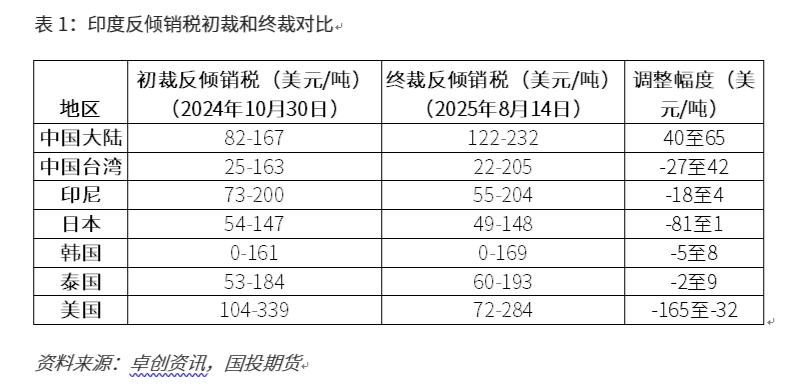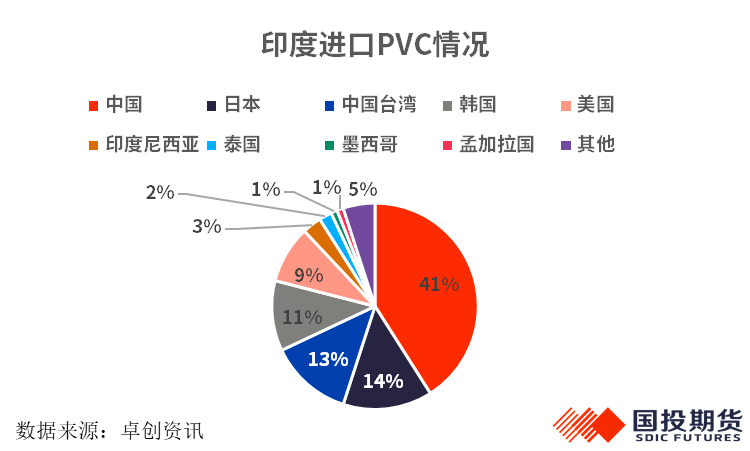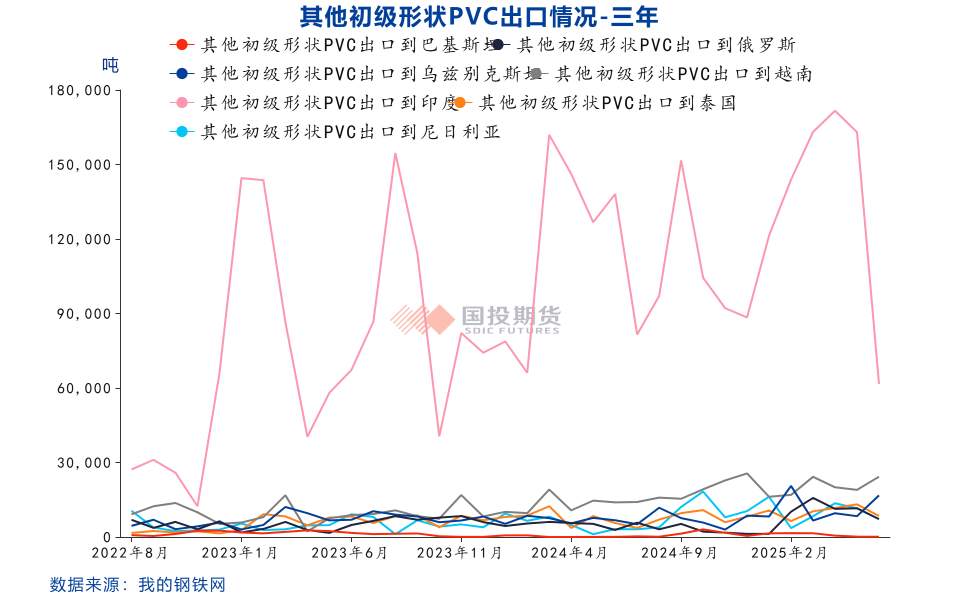Impact of India Anti-Dumping Final Ruling on PVC
India's final anti-dumping ruling exceeds expectations.
On March 26, 2024, the Indian Ministry of Commerce and Industry issued an announcement stating that, in response to applications from domestic companies Chemplast Cuddalore Vinyls Limited, DCM Shriram Limited, and DCW Limited, it had initiated an anti-dumping investigation on suspension-grade polyvinyl chloride (PVC) originating in or imported from mainland China, Indonesia, Japan, South Korea, Taiwan (China), Thailand, and the United States. On October 30, 2024, the Ministry issued a preliminary affirmative determination for the case. On August 14, 2025, the Ministry issued a final affirmative determination, recommending the continued imposition of anti-dumping duties on the products from the above countries and regions for a period of five years. There is a significant difference between the final and preliminary determinations: the anti-dumping duty imposed on China was significantly higher than expected, with an increase to USD 122-232/ton, representing the largest increment; the anti-dumping duty on the United States was significantly reduced, with a decrease of -165 to -32 USD/ton, bringing the U.S. duty down to USD 72-284/ton; the duties on Japan and Indonesia were also reduced; while the duties on Taiwan (China), South Korea, and Thailand fluctuated within a narrow range. It is expected that China’s exports of PVC to India will decrease substantially in the future.

2. India's PVC Import Situation
India is the world's largest importer of PVC, accounting for 16% of global imports. In India, PVC is mainly used to meet agricultural demand (such as irrigation pipes and water supply/drainage pipes), followed by applications in the construction industry (including profiles, films, and wires and cables). In terms of import sources, mainland China has consistently ranked first, with 41% of India's PVC imports coming from mainland China in 2024. Japan, Taiwan (China), South Korea, and the United States accounted for 14%, 13%, 11%, and 9% of imports, respectively.
Although India's anti-dumping duty on PVC has been announced, the specific implementation time has not yet been disclosed. The market expects that it may take about a month for the announcement. Pay attention to the subsequent specific execution time, as there might be a window period in between, creating opportunities for a rush in exports. If the policy is implemented, it is expected that the import structure of PVC in India will undergo significant changes. The import share from mainland China is expected to decrease, while the shares from Japan, Taiwan, South Korea, the United States, and Indonesia are expected to increase.

3. China's PVC Exports Seek New Directions
Due to India's BIS certification policy and anticipated anti-dumping tax policies, Indian importers stockpiled goods in advance during the policy window. This year, China's PVC export volume has performed remarkably, reaching 1.9597 million tons from January to June, a year-on-year increase of 50.7%. Currently, India remains the largest destination for China's PVC exports, accounting for about 50% of the total exports. However, the latest data for June shows a significant decline in India's import volume, dropping 62.19% month-on-month from May. Meanwhile, exports to Vietnam, the UAE, Uzbekistan, Thailand, and other regions have increased rapidly. On the one hand, India is experiencing the traditional monsoon off-season with seasonal decline; on the other hand, Chinese exporters are also exploring new export directions and actively adjusting their export structure.
In the future, after India's anti-dumping policy is implemented, it is expected that China will reduce its dependence on exports to India and instead increase exports to Southeast Asia and other regions. The structure of China's PVC exports will change, and in the long term, the impact of the anti-dumping policy on China's exports will be limited.

4. Summary
India’s final anti-dumping ruling exceeded expectations. China will reduce exports to India and instead increase exports to Southeast Asia and other regions. The overall impact of anti-dumping policies on China’s total exports is limited. Strategically, integrated chlor-alkali operations remain profitable in the short term, but cost support is not significant. Supply remains under high pressure, and social inventories continue to be elevated. It is expected that futures prices will fluctuate with a weak bias.
【Copyright and Disclaimer】The above information is collected and organized by PlastMatch. The copyright belongs to the original author. This article is reprinted for the purpose of providing more information, and it does not imply that PlastMatch endorses the views expressed in the article or guarantees its accuracy. If there are any errors in the source attribution or if your legitimate rights have been infringed, please contact us, and we will promptly correct or remove the content. If other media, websites, or individuals use the aforementioned content, they must clearly indicate the original source and origin of the work and assume legal responsibility on their own.
Most Popular
-

EVA Morning Prices on September 12: Most of the Market Holds Steady, Highest Rise of 50 Yuan
-

Domo Chemicals Files for Bankruptcy Protection in Germany! B. Braun Launches New Supply Assurance Program
-

Vynova's UK Chlor-Alkali Business Enters Bankruptcy Administration!
-

[PET Weekly Outlook] Polyester Bottle Chips Expected to Oscillate and Warm Up with Costs Today
-

Case Study | Clariant AddWorks™ Additives Solve Plastic Yellowing Problem






